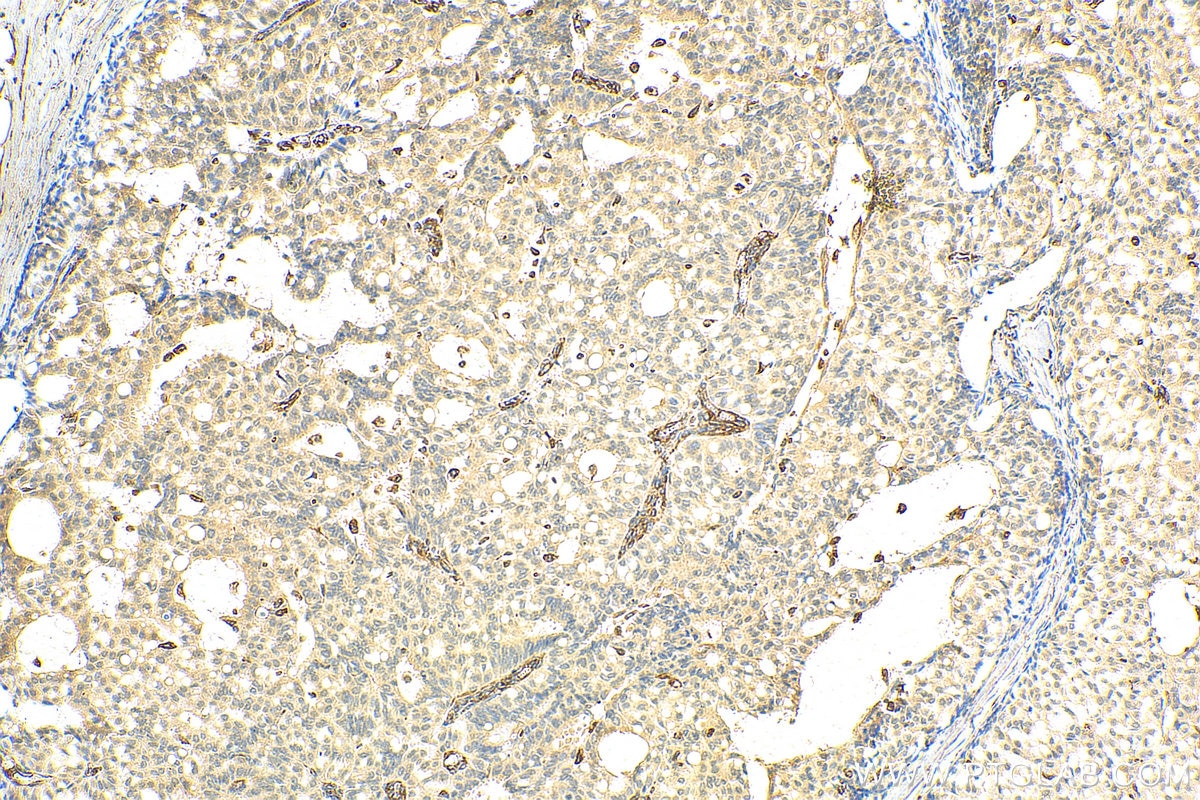Tested Applications
| Positive IHC detected in | human breast hyperplasia tissue, human breast cancer tissue Note: suggested antigen retrieval with TE buffer pH 9.0; (*) Alternatively, antigen retrieval may be performed with citrate buffer pH 6.0 |
This antibody is recommended for IHC.
Recommended dilution
| Application | Dilution |
|---|---|
| Immunohistochemistry (IHC) | IHC : 1:50-1:500 |
| It is recommended that this reagent should be titrated in each testing system to obtain optimal results. | |
| Sample-dependent, Check data in validation data gallery. | |
Product Information
26638-1-AP targets PCID2 in IHC, ELISA applications and shows reactivity with human samples.
| Tested Reactivity | human |
| Host / Isotype | Rabbit / IgG |
| Class | Polyclonal |
| Type | Antibody |
| Immunogen | PCID2 fusion protein Ag24417 Predict reactive species |
| Full Name | PCI domain containing 2 |
| Calculated Molecular Weight | 399 aa, 46 kDa |
| GenBank Accession Number | BC031246 |
| Gene Symbol | PCID2 |
| Gene ID (NCBI) | 55795 |
| RRID | AB_2918105 |
| Conjugate | Unconjugated |
| Form | Liquid |
| Purification Method | Antigen affinity purification |
| UNIPROT ID | Q5JVF3 |
| Storage Buffer | PBS with 0.02% sodium azide and 50% glycerol , pH 7.3 |
| Storage Conditions | Store at -20°C. Stable for one year after shipment. Aliquoting is unnecessary for -20oC storage. 20ul sizes contain 0.1% BSA. |
Background Information
Human PCID2, is characterized by its PCI interaction domain and its involvement in the mammalian transcription export complex (TREX-2). PCID2 colocalizes with gamma-tubulin and centrin-2 at the centrosome of HeLa cells. It's required for B-cell survival through the regulation of the expression of cell-cycle checkpoint MAD2L1 protein during B cell differentiation. PCID2 has some isoforms with MW 43-46 kDa and 52 kDa.
Protocols
| Product Specific Protocols | |
|---|---|
| IHC protocol for PCID2 antibody 26638-1-AP | Download protocol |
| Standard Protocols | |
|---|---|
| Click here to view our Standard Protocols |







